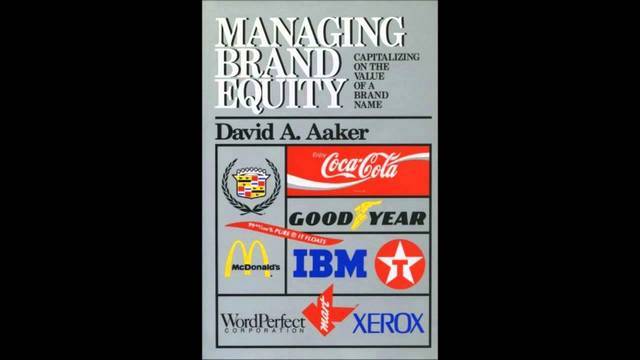In the field of marketing, Brand Equity means the value of a brand. The concept of the value of a brand is very interesting and deeper than what it looks like. The generally accepted notion for a brand owner is that a well-known brand in the market will give more revenues and goodwill rather than the lesser known ones. There have been multiple approaches and studies happened to understand the concept of brand value.
Different fields of consumer and brands have given different definitions and ways to identify the brand value. As per cognitive psychology, the brand equity depends upon the consumers’ awareness and how they associate with a brand, however, information economics suggests that since a strong brand name is an identifier of the good quality product, the monetary value that it can generate will be the parameter of brand equity model.
Many other types of research in the field have suggested that brand is one of the most important assets of a company as it can significantly help in improving the financial performance of the company. One of the many types of research, tools, concepts in brand equity is the Aaker’s Brand Equity Model.
Aaker’s Brand Equity model was developed by Professor David Aaker of the University of California. His model viewed the brand equity model as a combination of brand awareness, brand loyalty and brand associations, which then combines with each other to finally offer the value provided by a product or service. For Aaker, brand management begins with building up a brand identity, which is one of a kind arrangement of brand affiliations speaking to what the brand stands for and offers to consumers a desiring brand picture.
Real-world examples of Aaker’s Brand Equity Model in action
Coca-Cola’s enduring success is a prime example of Aaker’s Brand Equity Model in action. With a consistent brand image and strong associations of happiness and refreshment, Coca-Cola has maintained high brand awareness and loyalty, contributing to its brand value of $57.5 billion in 2022, according to Interbrand.
Similarly, Tesla has rapidly increased its brand value by emphasizing innovation and quality. In 2022, Tesla’s brand value grew by 32% to $48 billion, as reported by Interbrand. This growth reflects Tesla’s effective use of brand associations and perceived quality, key elements of Aaker’s model.
Table of Contents
Four Elements of Brand Identity as per Aaker’s Brand Equity Model
Aaker primarily sees brand identity as a combination of 8-12 elements which fall under four perspectives:
Brand as Product – This consists of product scope, product attributes, quality or value of the product, uses, users and country of origin.
Brand as Organization – it consists of organizational attributes, local workings versus global activities.
Brand as Person – it consists of brand personality and consumer brand relationships.
Brand as Symbol – it consists of audio and visual imagery, metaphorical symbols and brand heritage.
The motive of the Aaker Model is to help in making a brand strategy comprising of various brand components or patterns, in order to illuminate, advance and separate a brand from its rivals. An organization deliberately utilizes a few of these components to impart to the buyers what their brand stands for.
5 Components of Brand value as per Aaker’s Brand Equity Model
Aaker states that brand value is controlled by associated five components. We will understand the brand value in the next section in details but before that let’s understand these components and how are they integrated with brand value. This is essential for understanding the general picture of brand equity model. These components are:-
- Brand Loyalty – The extent to which people are loyal to a brand
- Brand Awareness – The extent to which a brand is known among the public
- Perceived Quality – The extent to which a brand is considered to provide good quality products
- Brand Associations – The associations triggered by a brand
- Other Proprietary – Assets like patents and intellectual property rights, relations with trade partners. The more proprietary rights a brand has accumulated, the greater the brands competitive edge in those fields.
How brand Value in branding management is created as per Aaker’s Brand Equity Model?
As per Aaker’s model, brand assets create value for both customers and the firm in different ways. Let us see below how this value is created in multiple ways:-
- Brand value can enable a customer to decipher, process, store, and recover a gigantic amount of data about products and brands.
- It can influence the client’s trust in the purchase choices; a client will naturally be more relaxed with the brand that was last utilized, is considered to have high quality, or is familiar.
- Perceived quality and brand affiliations offer value to the consumers by improving the consumer’s satisfaction.
- Brand value can improve the productivity and adequacy of promotional programs. An advertisement, for instance, will be more viable if it is a usual brand of a customer.
- Brand awareness, perceived quality and brand associations would all be able to reinforce the loyalty towards the brand by expanding consumer loyalty and giving motivational reasons to purchase the product.
- Brand equity model will normally give higher edges to products, allowing premium pricing and decreasing dependence on promotional activities. Brand value can likewise give a stage to development by brand extensions and can help in the distribution channels as well.
- An established brand works as a strong barrier to switching to other competitors.
Therefore, all in all, Aaker model provides a deep insight into this whole concept of brand equity and how to evaluate it. The model can be used at various stages of marketing like improving the perception of a product performance, to increase the loyalty of customers towards a brand, and sometimes to differentiate from competitors as well.
Thank you for reading our article about brand equity.
Liked this post? Check out the complete series on Branding


Hi!
I’m writing a paper about brand equity and I’m using some of this text as a reference, but in order to get the reference list correct I need the date of when this text was written, could you tell me and send it to me please? thanks!
Best regards
Emelie Hansson